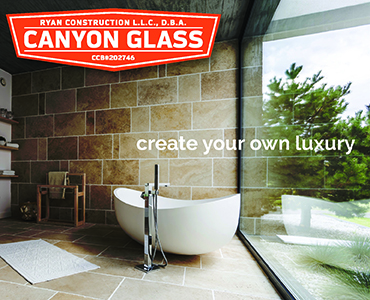BY CHRIS SANTELLA
PHOTOS BY RYAN WEEDEN
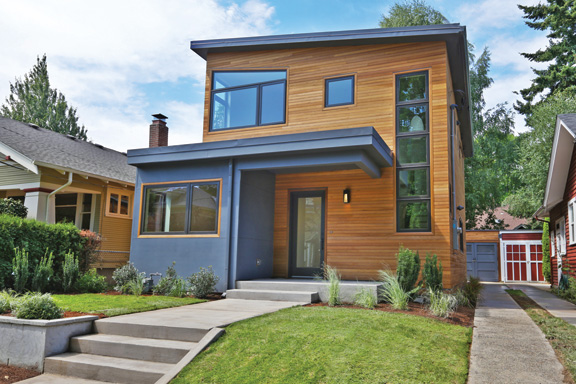 As an avid runner, Ryan Weeden’s feet have taken him all over the globe. In his former role as an executive director of a global non-profit, he spent ten years working in more than 30 countries. “I learned early on that the single best way to beat jet lag was to exercise–even better was when my exercise would take me through a small village outside of Cairo, majestic Beijing side streets, or a serene early morning along the Seine,” he says. “On your feet, you appreciate the rich fabric of a place: the colorful doors, the precarious balconies, the uneven cobblestone streets. We have become so homogenized through our shared digital experience that the physical differences of place are one of the last true differences around the world.”
As an avid runner, Ryan Weeden’s feet have taken him all over the globe. In his former role as an executive director of a global non-profit, he spent ten years working in more than 30 countries. “I learned early on that the single best way to beat jet lag was to exercise–even better was when my exercise would take me through a small village outside of Cairo, majestic Beijing side streets, or a serene early morning along the Seine,” he says. “On your feet, you appreciate the rich fabric of a place: the colorful doors, the precarious balconies, the uneven cobblestone streets. We have become so homogenized through our shared digital experience that the physical differences of place are one of the last true differences around the world.”
Ten years ago, Weeden put away his traveling shoes and started Four Square Design/Build, a residential construction firm in Portland. Four Square combines international building styles with advanced green building practices to create unique, sustainable homes.
 Despite changing professions, Weeden hasn’t hung up his running shoes. “Jogging throughout the city is a great way to understand what makes Portland so unique. There is no one style of home in Portland—from Craftsmans to ranches to butterfly-roof modern homes—Portland has it all. Moving at a jogging pace, however, you notice one distinct thing about the older neighborhoods quality. Homes from the 1910s, ‘20s and ‘30s were generally built well with quality materials, quality practices and attention to detail.”
Despite changing professions, Weeden hasn’t hung up his running shoes. “Jogging throughout the city is a great way to understand what makes Portland so unique. There is no one style of home in Portland—from Craftsmans to ranches to butterfly-roof modern homes—Portland has it all. Moving at a jogging pace, however, you notice one distinct thing about the older neighborhoods quality. Homes from the 1910s, ‘20s and ‘30s were generally built well with quality materials, quality practices and attention to detail.”
During a mid-winter jog last year, Weeden found his latest project, a rundown bungalow a few blocks from his home in the inner NE Hollywood neighborhood. “Over the past two years, I have been struck at the rapid acquisition of infill building lots/homes that have been turned from smaller homes to large whole-lot homes.” These quickly-built homes tend to focus on builder-grade square footage at the expense of careful design, energy-saving strategies and
higher-quality materials.
Four Square’s building process takes a different approach, undertaking one project at time to create high-performing homes designed to last another 100 years. It’s a bit of the “slow food movement” of home building where time is taken and resources invested to create an appropriately sized, site—designed home that incorporates the best solar strategies available, respects the unique characteristics of Portland’s rich architectural traditions and creates a high-efficiency structure.
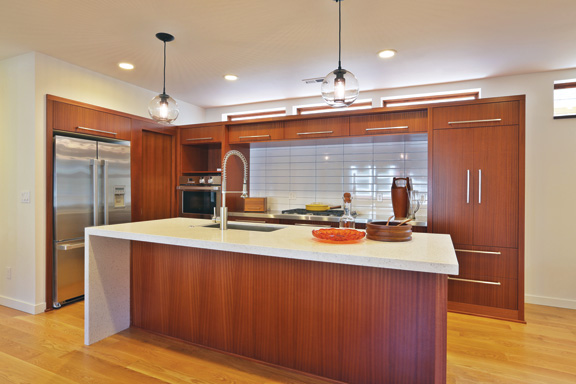 This recently finished home has been turning heads and starting conversations. A striking departure from the surrounding Craftsman and Bungalow homes, this 2500-square-foot, four-bedroom, 2.5-bath, modern eco-home incorporates dozens of energy and resource-saving construction practices. From a warm-roof design with no energy-sucking attic space to regionally sourced cedar siding to a bold street-facing eco roof, this home has received Platinum-level certification, and earned Four Square the distinguished “New Green Builder of the Year” designation from Earth Advantage.
This recently finished home has been turning heads and starting conversations. A striking departure from the surrounding Craftsman and Bungalow homes, this 2500-square-foot, four-bedroom, 2.5-bath, modern eco-home incorporates dozens of energy and resource-saving construction practices. From a warm-roof design with no energy-sucking attic space to regionally sourced cedar siding to a bold street-facing eco roof, this home has received Platinum-level certification, and earned Four Square the distinguished “New Green Builder of the Year” designation from Earth Advantage.
“Size and scale matter,” Weeden says. “Our neighborhoods have been created over 100-plus years and include many different interpretations of what a home is. With our current understanding of how home energy consumption contributes to climate change, it is a moral imperative to include energy-conserving features as an integral part of the building.”
There are many routes to designing a high-performing home, but all of them include tight energy envelopes with a particular focus on well-designed air infiltration barriers, high insulation values in walls, roofs and floors, and well-designed HVAC systems.
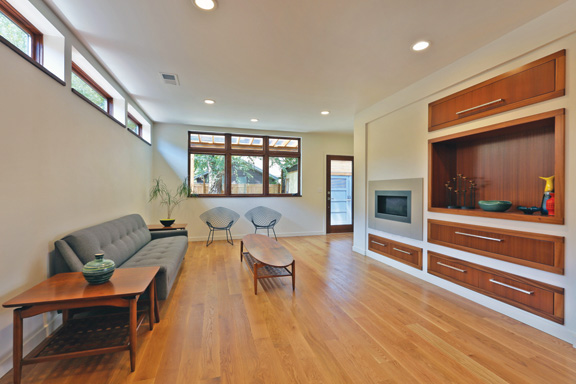 “Energy conservation is a primary consideration, but thoughtful design is critical to a long-lasting home,” says Ryan Shannahan, an Earth Advantage green building consultant. “The resource decision-making process for green buildings is one that necessarily considers the length of service of those materials—that is to say, build well with high-quality materials and design your structures and systems properly, and the resources you use to build your home will last for the next 100 years.”
“Energy conservation is a primary consideration, but thoughtful design is critical to a long-lasting home,” says Ryan Shannahan, an Earth Advantage green building consultant. “The resource decision-making process for green buildings is one that necessarily considers the length of service of those materials—that is to say, build well with high-quality materials and design your structures and systems properly, and the resources you use to build your home will last for the next 100 years.”
Critical to the construction of a high-performing home is the team of subcontractors, suppliers and technical support services. “We select local, small-scale subcontractors who are willing to learn and adapt new practices in home construction,” Weeden says. “All this attention to detail is nothing without onsite verification and a careful review of the building processes. These inspections include performance testing on mechanical systems, air flows and moisture content in building materials. Construction is complicated and has many moving parts. Third-party verifiers are critical to ensuring your high-performing house goals are met.”
“We are proud to be part of a small, but committed group of craftspeople doing old-school quality work with innovative, cutting-edge design and technology, Weeden says. “In our own way, we are adding a stitch to the citywide buildingscape. We hope it inspires, contributes and operates with upmost efficiency for the next 100 years.”
Four Square is located in Portland, OR. For more information, email [email protected] or visit here.
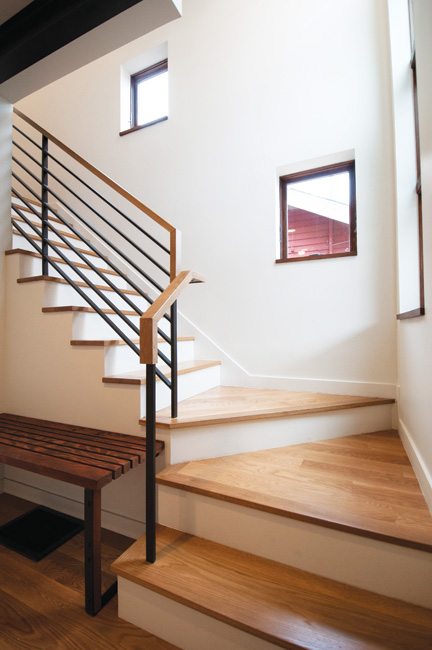 Check the score Energy Performance Score (EPS) is a metric designed to rate the energy efficiency of a home. It is a bit like the miles-per-gallon rating for a car and allows apples-to-apples comparison across structures.
Check the score Energy Performance Score (EPS) is a metric designed to rate the energy efficiency of a home. It is a bit like the miles-per-gallon rating for a car and allows apples-to-apples comparison across structures.
Ducts inside A pinnacle design strategy for efficient HVAC systems is to retain the duct distribution within the heated space of the home. No more ducts through cold/hot crawl and attic spaces. All the heating and cooling produced is distributed in the house.
Build it tight, ventilate right Green-certified homes are depressurized using a blower door test to determine air infiltration rates and seal out unwanted leaks. Recent building science has determined air infiltration is the leading cause of heating and cooling energy loss.
Build it smaller Builders can design homes that have less space to heat and cool and require fewer resources to construct. By creating efficient room layouts and eliminating large hallways or small/awkward rooms, the overall house footprint can be greatly reduced.
Keep it local By using local suppliers, subcontractors and regionally-sourced materials, homeowners can more readily choose options that are appropriate for their climate and lifestyle and select custom features for
their homes.




